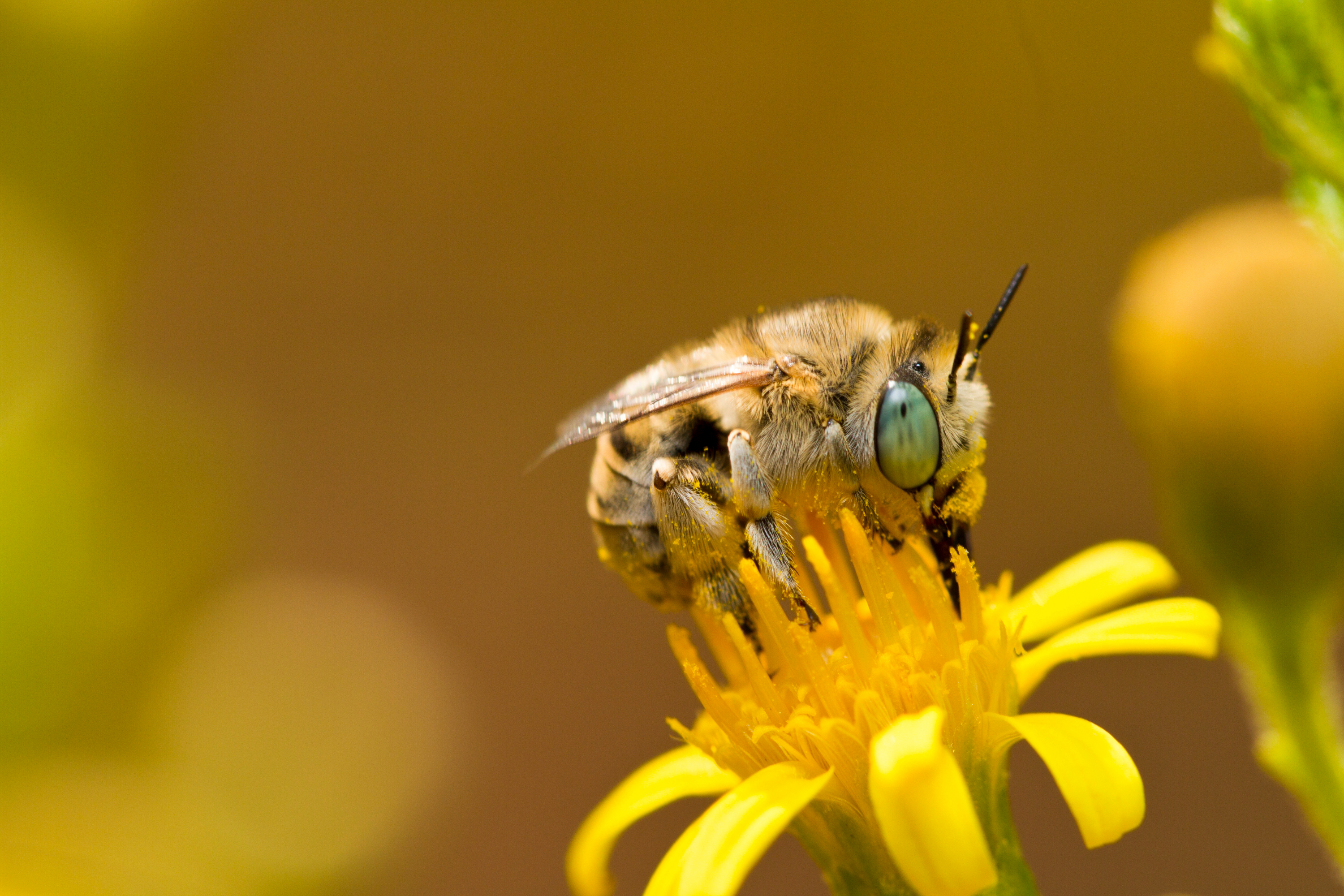Green-eyed flower bee
(Anthophora bimaculata)

Description
Anthophora bimaculata (also called green-eyed flower bee) is a species of bees. They are 8-9 mm long. The male has narrow light tergite bandages, yellow face and normally hairy middle legs clearly visible in the field. The females are Clypeus yellow, but at the base with 2 large black spots, tergite 4 and 5 gray-yellow tomentose hairs, tergias with light hair ties in the field clearly recognizable. Both genders have olive green complex eyes and one very high, clearly perceptible flight sound. Habitat is important for identification. In North Africa from Morocco to Libya; a report by FRIESE from Eritrea is questionable. From Portugal through southern, central and eastern Europe, Ukraine and southern Russia to eastern Siberia (Central Baikal) and across Asia Minor and the Caucasus to Iran and Kyrgyzstan; north to Central England (allegedly also recently detected in Ireland), Denmark, Latvia, Kirov; south to Sicily (also on Corsica, no evidence from Sardinia), Albania, Bulgaria. In central Europe in all regions in suitable habitats. Generally rare. In Germany from all federal states with the exception of Schleswig-Holstein up-to-date everywhere. Reported from all federal states in Austria with the exception of Salzburg, Tyrol and Vorarlberg. In Switzerland currently from Graubünden and Valais, historically from Lake Geneva, Lake Thun and Lake Biel as well as Ticino, Mesox and Domleschg. In sandy areas in lower locations: inland dunes and fields of drifting sand, sand pits, sandy embankments and ruderal places, forest edges and forest clearings. Nests on vegetation-free, flat surfaces or in small trailing edges. Nests only in fine and medium sands (drifting sand, weathered sand). Nests in self-dug cavities in the earth. Nests are found both in early succession stages with only little vegetation cover as also in late stages with heavy coverage. Nests have been found in the root balls of silver grass clusters. A main tunnel is 4-5 cm long deep in the ground. Under favorable conditions in small to large aggregations. The bee genus Anthophora is one of the largest in the family Apidae, with over 450 species worldwide in 14 different subgenera. They are most abundant and diverse in the Holarctic and African biogeographic regions. All species are solitary, though many nest in large aggregations. Nearly all species make nests in the soil, either in banks or in flat ground; the larvae develop in cells with waterproof linings and do not spin cocoons.
Taxonomic tree:







